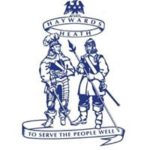Surrounded by the natural and stunning countryside of Sussex, Haywards Heath offers an inviting community atmosphere while its excellent connections make it the ideal centre for business in Mid Sussex within easy reach of Gatwick Airport, Brighton and Central London.
The recently regenerated Train Station offers direct links to London, Gatwick and Brighton and the many attractions of the Town and its surrounding countryside make it the ideal base for visitors to Sussex.
The town has a Sainsbury’s superstore and the new Waitrose Store offering a kitchen/café serving breakfast, lunch and dinner and a wine bar. The Orchards Shopping Centre, South Road & Sussex Road have a wide variety of shops featuring independent shops as well as well-known favourites such as Tesco Express, Boots and Marks & Spencer. The Broadway is the social hub with bars and restaurants including Cote Brasserie, Café Rouge and Prezzo to name a few.
Surrounded by open countryside and many attractive villages including Lindfield, Cuckfield, and Ardingly. It is also ideally placed for many local attractions such as Borde Hill Gardens, Wakehurst Place, Sheffield Park Gardens and the Bluebell Railway. The Town benefits from access to excellent schools, the acclaimed Princess Royal Hospital, a busy social scene and leisure facilities including many sports clubs and parks and gardens.
This article uses material from the Haywards Heath Town Council Website.

Haywards Heath Town Council
Address: 40 Boltro Rd Haywards Heath, West Sussex RH16 1BA
Phone: 01444 455694
Email: townclerk@haywardsheath.gov.uk
Web: http://www.haywardsheath.gov.uk
Information from West Sussex Website:
Haywards Heath is now one of the most important towns in West Sussex.
Together with its near neighbour Burgess Hill, Haywards Heath is the economic powerhouse of Mid Sussex, growing at a steady rate and providing jobs for many people all over West Sussex – although good road and railway connections mean that many of Haywards Heath’s 25,000 residents commute to Gatwick and London too.
Inevitably a lot of Haywards Heath is modern, and relatively uninteresting – at least compared to some of the many other historic towns and villages in Sussex. Pevsner described Haywards Heath as “large and quite amorphous” and it hasn’t got any smaller since he wrote. And there probably isn’t any more variety to the town either as thousands of new homes have been built since then too.
But there is some fine uplifting countryside outside Haywards Heath in the Ouse Valley. The town is close to the Weald and the South Downs and Ashdown Forest lies to the North.
And there are some interesting attractions nearby and plenty to do in the area.
Within Haywards Heath there’s a conservation area around Muster Green which gives a flavour of what the village would have been like before the arrival of the London to Brighton railway spurred Haywards Heath to grow into the modern town we have today.
There was a small civil war battle at Muster Green by the way in 1642 in which the parliamentarians routed a small Royalist force led by Sir Edward Ford of Uppark in West Sussex.
The ancient Dolphin Pub just off Muster Green is one of the oldest buildings in the town, dating from the 16th century. The pub had been named for 130 years after the Sergison family who owned huge tracts of farmland in around Haywards Heath before the modern town was built; but the pub recently reverted to its even more traditional original pub name. Great Haywards and Little Hayward are two other old and distinguished late medieval buildings in the town.
The former St Francis Hospital which was opened in 1859 as the county lunatic asylum by the Victorians is still an impressive collection of buildings, even though it is now being turned into a housing development called Southdown Park.
Haywards Heath in 30 seconds:
Until Victorian times, Haywards Heath was a small village which was outranked by its neighbours Cuckfield and Lindfield.Haywards Heath’s development almost came about by accident.
An 1825 survey proposed a route for the proposed London to Brighton railway line passing through Cuckfield, but local landowners including the influential Sergison family kicked up a fuss and the plans were redrawn.
When the railway was opened in 1841 it passed through Hayward’s Heath.
Cuckfield’s “loss” was Haywards Heath’s “gain”, depending on how you look at it.
The railway brought prosperity to the town and the rest, as they say, is history.
This article uses material from the WestSussex.info Website.
